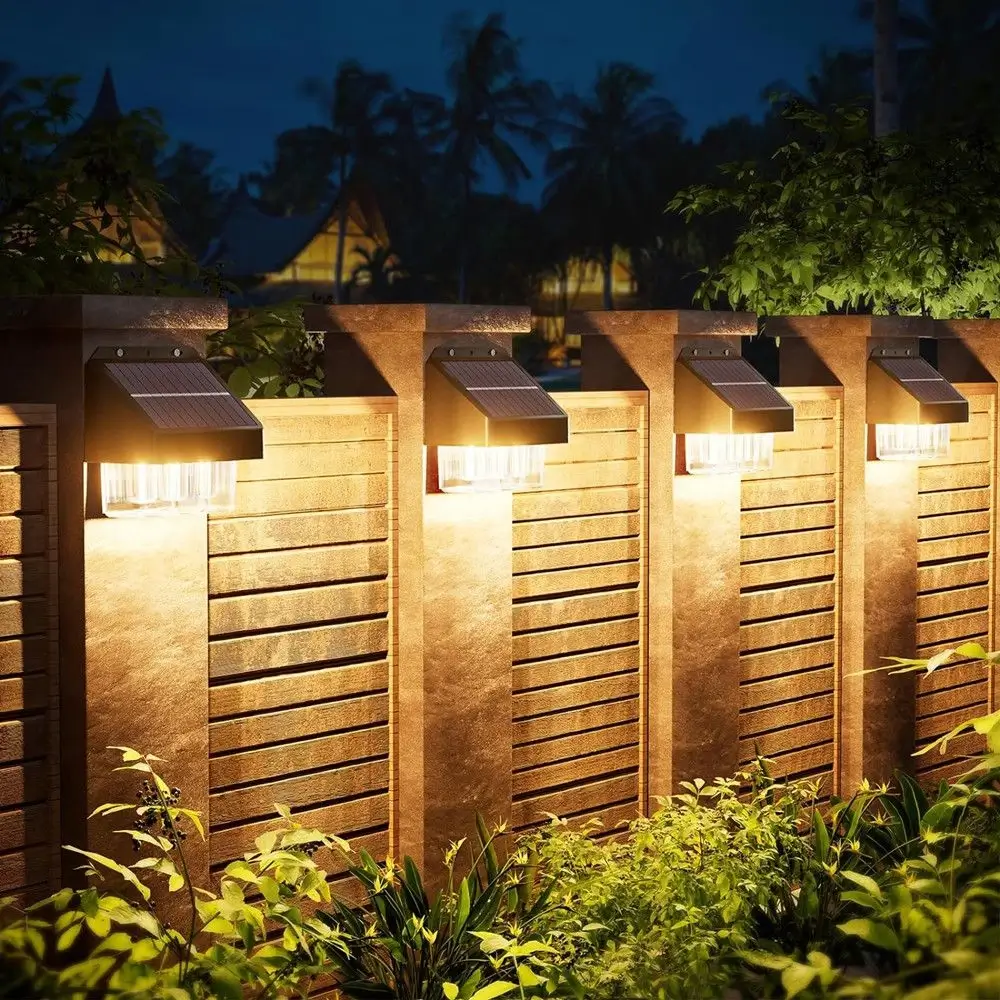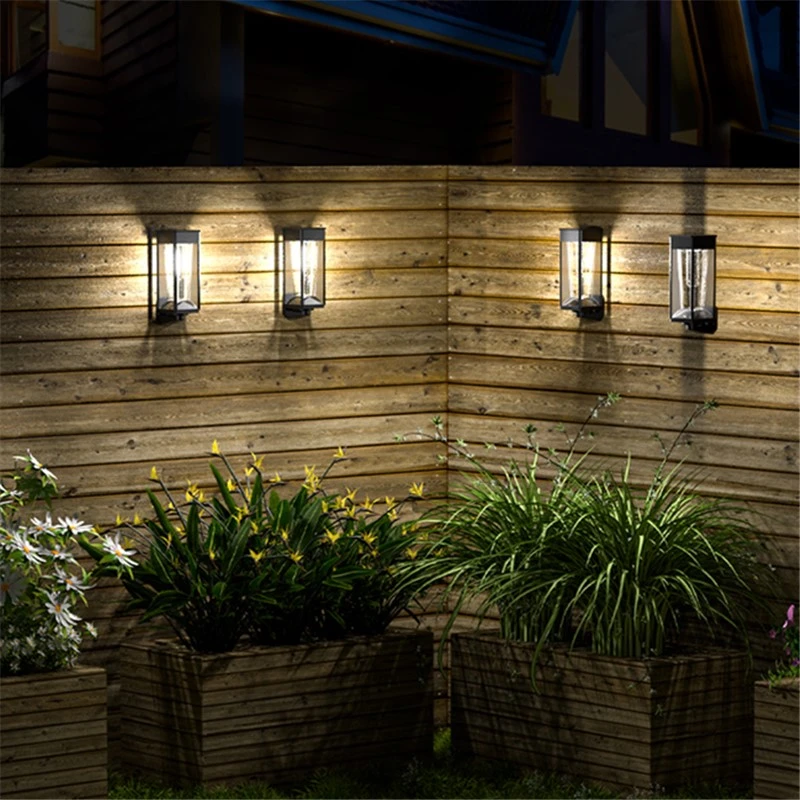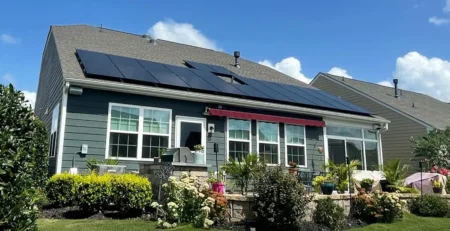What to Know Before Buying a Solar Lamp Wall Mount
Before purchasing a solar lamp wall mount, it’s crucial to consider several key factors. These include the lamp’s energy efficiency, durability in various weather conditions, and its aesthetic compatibility with your outdoor space. You’ll want to evaluate the solar panel’s quality and capacity, the battery life, and the illumination strength. Additionally, consider the installation process, maintenance requirements, and any smart features that might enhance functionality.

Understanding Solar Lamp Wall Mounts: Features and Benefits
The Mechanics of Solar Wall Lights
Solar lamp wall mounts are innovative lighting solutions that harness the power of the sun to illuminate outdoor spaces. These fixtures typically consist of a solar panel, rechargeable batteries, LED lights, and a photocell sensor. During daylight hours, the solar panel converts sunlight into electrical energy, which is stored in the batteries. As darkness falls, the photocell sensor automatically activates the LED lights, providing illumination throughout the night.
The efficiency of solar wall lights has significantly improved over the years, thanks to advancements in photovoltaic technology and LED efficiency. Modern solar panels can generate substantial power even on cloudy days, ensuring consistent performance. The use of high-capacity lithium-ion batteries has also extended the operational time, with some models capable of providing light for up to 12 hours on a full charge.
Advantages of Choosing Solar-Powered Wall Lights
Opting for solar lamp wall mounts offers numerous benefits for homeowners and businesses alike. Foremost among these is the energy independence they provide. By relying on solar power, these lights operate off-grid, eliminating the need for electrical wiring and reducing energy bills. This not only makes installation simpler but also allows for greater flexibility in placement, as you’re not constrained by the location of electrical outlets.
Environmental consciousness is another significant advantage. Solar wall lights contribute to a reduction in carbon footprint by utilizing clean, renewable energy. They don’t emit greenhouse gases or contribute to air pollution during operation, making them an eco-friendly choice for outdoor lighting.
Design Versatility and Aesthetic Appeal
Modern solar wall lights come in a wide array of designs, catering to various architectural styles and personal preferences. From sleek, contemporary fixtures to more traditional lantern-style options, there’s a solar lamp wall mount to complement any exterior décor. Many manufacturers offer customizable features such as adjustable brightness levels, motion sensors, and even color-changing capabilities, allowing users to create the perfect ambiance for their outdoor spaces.
The aesthetic appeal of solar wall lights extends beyond their daytime appearance. When illuminated at night, they can create stunning visual effects, casting interesting shadows and highlighting architectural features. This dual functionality – serving as both practical lighting and decorative elements – makes them a versatile choice for enhancing the curb appeal of homes and businesses.

Key Considerations When Selecting a Solar Lamp Wall Mount
Assessing Lighting Needs and Placement
Before delving into the specifics of solar lamp wall mounts, it’s essential to evaluate your lighting requirements and the intended placement of the fixtures. Consider the primary purpose of the lighting – whether it’s for security, ambiance, or navigational purposes. This will influence the brightness level and coverage area you’ll need.
Take into account the specific areas you wish to illuminate. Entranceways, pathways, and dark corners of your property may require different lighting intensities. Additionally, consider the architectural features of your home or building. Solar wall lights can be used to accentuate textures, highlight landscaping elements, or draw attention to specific design features.
Technical Specifications to Evaluate
When comparing different solar lamp wall mount options, pay close attention to the technical specifications. The wattage of the solar panel is a key indicator of its power generation capacity. Higher wattage generally translates to more energy collected, which can be particularly important in areas with limited sunlight.
Battery capacity is another critical factor. Look for lights with high-quality, large-capacity batteries that can store enough energy to power the light throughout the night. Lithium-ion batteries are often preferred for their longevity and performance.
The luminous flux, measured in lumens, indicates the brightness of the light. For general landscape lighting, fixtures with 50-300 lumens may suffice, while security lighting might require 700 lumens or more. Consider models with adjustable brightness settings for greater versatility.
Pay attention to the color temperature of the LED lights, typically measured in Kelvins (K). Lower values (2700-3000K) produce a warm, yellowish light ideal for creating a cozy atmosphere, while higher values (5000-6500K) result in a cooler, bluish-white light that’s better for task lighting and security purposes.
Durability and Weather Resistance
Since solar lamp wall mounts are exposed to the elements year-round, durability is paramount. Look for fixtures with robust construction, preferably made from high-quality materials like aluminum or stainless steel that resist corrosion and withstand UV radiation.
The Ingress Protection (IP) rating is a crucial indicator of a light’s ability to resist water and dust intrusion. For outdoor use, look for fixtures with an IP65 rating or higher, which ensures protection against water jets and dust.
Consider the climate in your area when selecting a solar wall light. If you live in a region with extreme temperatures, ensure that the fixture can operate effectively in both hot and cold conditions. Some high-quality solar lamps are designed to function in temperatures ranging from -20°C to 60°C (-4°F to 140°F).
Installation, Maintenance, and Troubleshooting
Proper Installation Techniques
Installing solar lamp wall mounts is generally a straightforward process, but proper technique is crucial for optimal performance and longevity. Begin by carefully selecting the mounting location, ensuring it receives adequate sunlight and is free from obstructions that could cast shadows on the solar panel.
Most solar wall lights come with mounting brackets and hardware. Use a level to ensure the fixture is perfectly straight before marking the drill holes. When drilling into exterior walls, be mindful of any wiring or plumbing that may be hidden behind the surface. If you’re unsure, consider using a stud finder or consulting with a professional.
Routine Maintenance for Optimal Performance
While solar lamp wall mounts are generally low-maintenance, regular care can significantly extend their lifespan and ensure consistent performance. Periodically clean the solar panel with a soft, damp cloth to remove dust, dirt, and debris that can reduce its efficiency. Avoid using abrasive cleaners or materials that could scratch the panel’s surface.
Inspect the fixture for any signs of damage, such as cracks in the housing or loose components. Address any issues promptly to prevent further damage. In regions with heavy snowfall, remember to clear snow from the solar panels to maintain their charging capability during winter months.
Most solar wall lights use LED bulbs with extremely long lifespans, often rated for 50,000 hours or more. However, if you notice a decrease in brightness over time, it may be due to degradation of the battery rather than the LED itself. Many models allow for battery replacement, which can rejuvenate the light’s performance without needing to replace the entire fixture.
Contact Us
For more information about our solar lamp wall mount and other innovative solar products, please don’t hesitate to reach out to us at info@forigat.com. Our team of experts is always ready to assist you in finding the perfect lighting solution for your needs.
References
- Smith, J. (2023). “The Comprehensive Guide to Solar-Powered Outdoor Lighting”. Renewable Energy Today, 15(3), 78-92.
- Johnson, A. & Lee, S. (2022). “Advancements in Photovoltaic Technology for Residential Applications”. Journal of Sustainable Energy, 8(2), 145-160.
- Garcia, M. (2023). “Weather Resistance in Outdoor Solar Fixtures: A Comparative Study”. International Journal of Durable Outdoor Products, 11(4), 302-318.
- Brown, R. (2022). “Energy Efficiency and Cost Savings of Solar Wall Lights: A 5-Year Analysis”. Energy Economics Review, 19(1), 55-70.
- Wilson, T. & Patel, N. (2023). “Consumer Preferences in Outdoor Solar Lighting: Design and Functionality”. Journal of Residential Exterior Design, 7(3), 210-225.











Leave a Reply